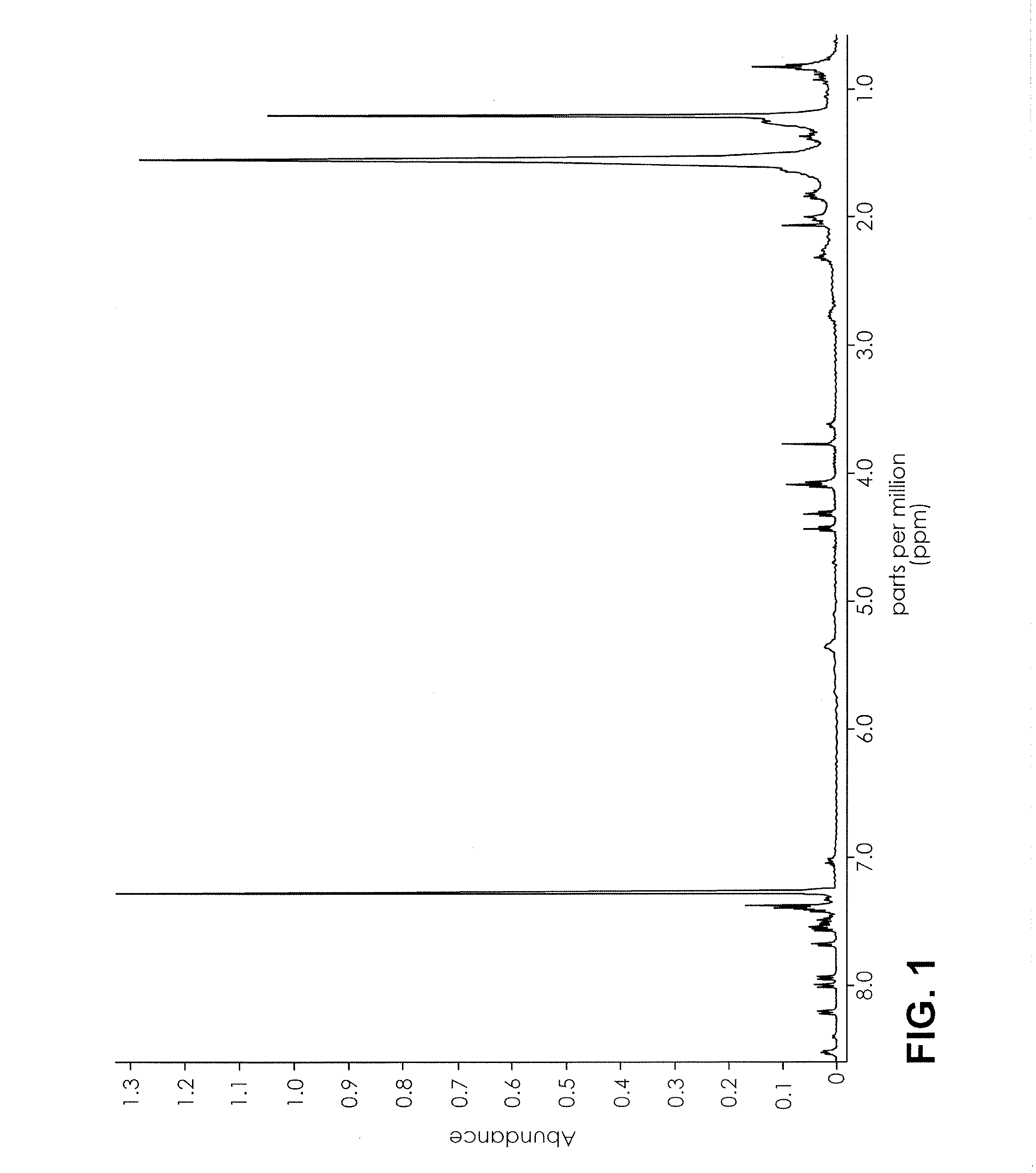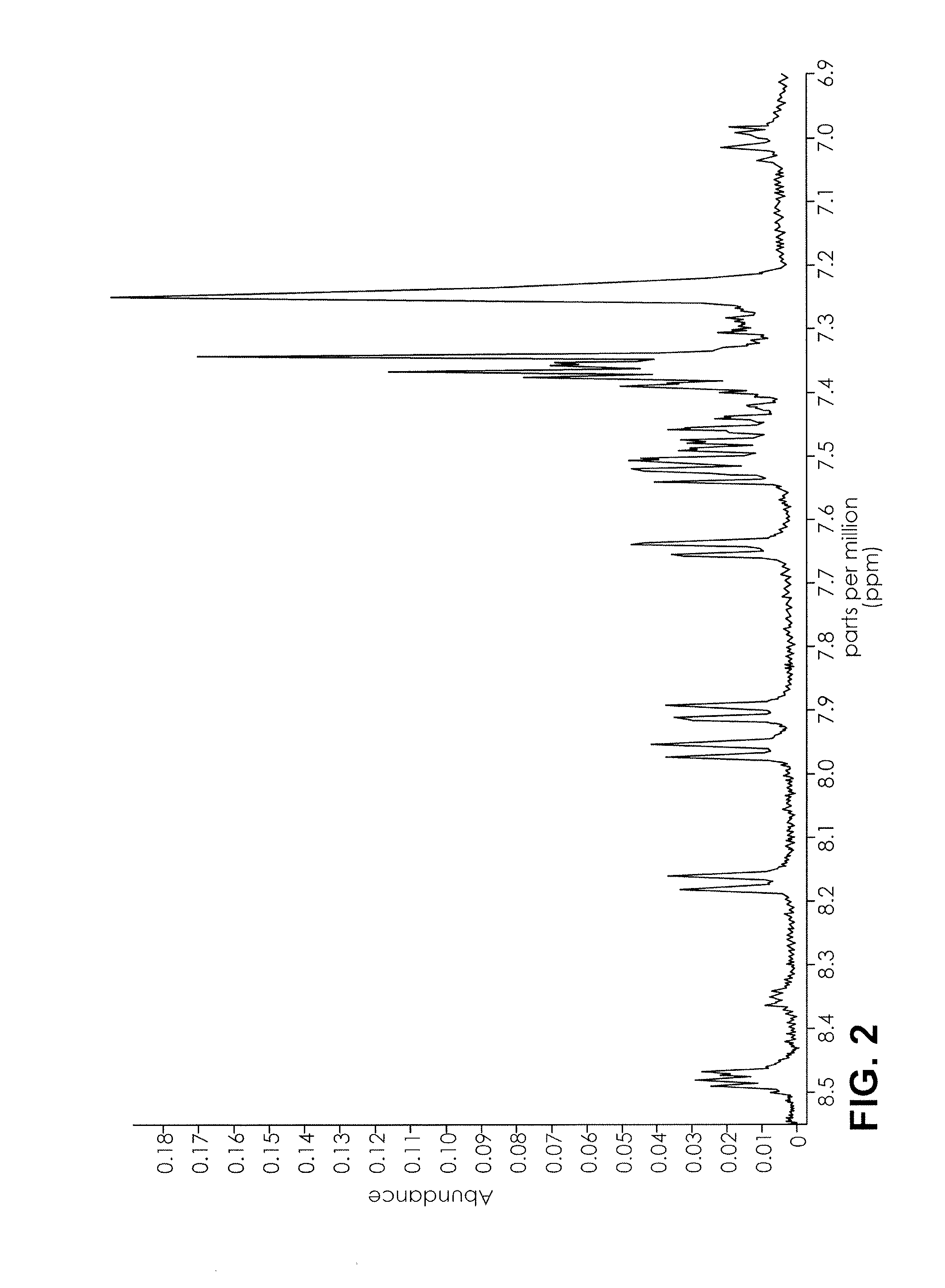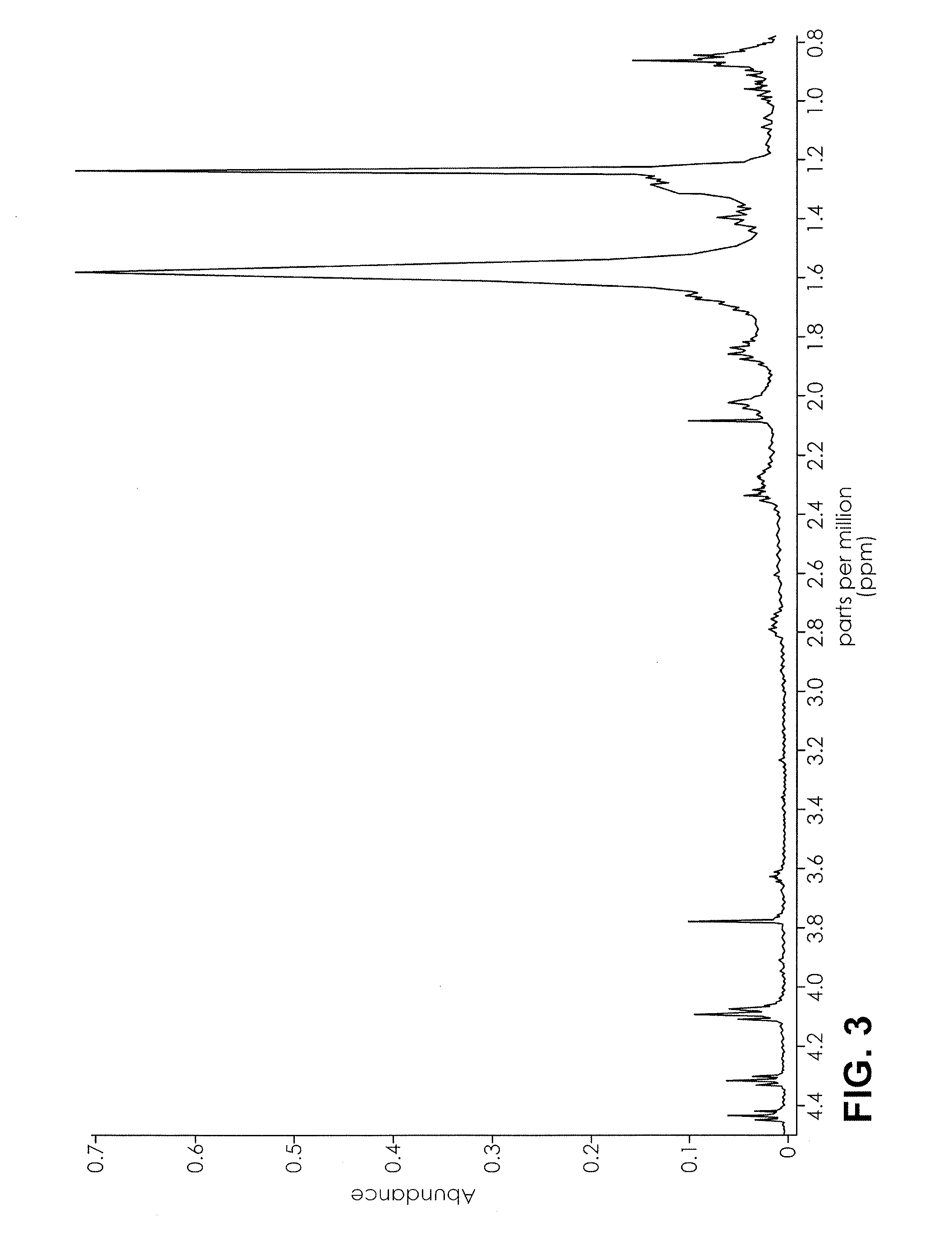Nuclear magnetic resonance implemented synthetic indole and indazole cannabinoid detection, identification, and quantification
a technology of nuclear magnetic resonance and synthetic cannabinoids, applied in the direction of nuclear magnetic resonance analysis, reradiation, instruments, etc., can solve the problems of time-consuming and impractical analysis for law enforcement purposes, affecting the regulation and law enforcement control of the state, and affecting the detection and quantification of synthetic cannabinoids in botanical products or solids
- Summary
- Abstract
- Description
- Claims
- Application Information
AI Technical Summary
Benefits of technology
Problems solved by technology
Method used
Image
Examples
example 1
Proton NMR Spectrum of AppleJacked
[0070]An herbal product named AppleJacked was obtained. 0.5 mL of CDCl3 was added to 50 mg of AppleJacked, and mixed for 3 minutes. The suspension was analyzed by 1H NMR in a 400 MHz NMR using a proton program run having a 4 second relaxation time and 32 scans. The range was set from 0-10 ppm, and the auto gain setting was on. The NMR spectrum is depicted in FIG. 1-3.
example 2
COSY NMR Spectrum of AppleJacked
[0071]An herbal product named AppleJacked was obtained. 0.5 mL of CDCl3 was added to 50 mg of AppleJacked, and mixed for 3 minutes. The suspension was analyzed by COSY NMR in a 400 MHz NMR using a proton-proton correlation program run having a 1.5 second relaxation time and 1 scan. The range was set from 0-10 ppm, and the spin state setting was off. The annotated NMR spectrum is depicted in FIG. 4. Two synthetic cannabinoids were identified in this sample, AM-2201 and RCS-04.
example 3
Proton NMR Spectrum of CloudNine
[0072]An herbal product named CloudNine was obtained. 0.5 mL of CDCl3 was added to 50 mg of CloudNine, and mixed for 3 minutes. The suspension was analyzed by 1H NMR in a 400 MHz NMR using a proton program run having a 4 second relaxation time and 32 scans. The range was set from 0-10 ppm, and the auto gain setting was on. The NMR spectrum is depicted in FIG. 5-7.
PUM
| Property | Measurement | Unit |
|---|---|---|
| mass | aaaaa | aaaaa |
| chemical shift | aaaaa | aaaaa |
| relaxation time | aaaaa | aaaaa |
Abstract
Description
Claims
Application Information
 Login to View More
Login to View More - R&D
- Intellectual Property
- Life Sciences
- Materials
- Tech Scout
- Unparalleled Data Quality
- Higher Quality Content
- 60% Fewer Hallucinations
Browse by: Latest US Patents, China's latest patents, Technical Efficacy Thesaurus, Application Domain, Technology Topic, Popular Technical Reports.
© 2025 PatSnap. All rights reserved.Legal|Privacy policy|Modern Slavery Act Transparency Statement|Sitemap|About US| Contact US: help@patsnap.com



